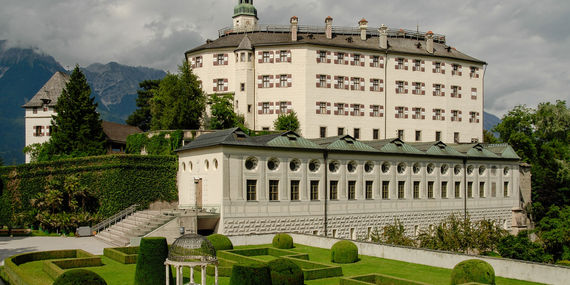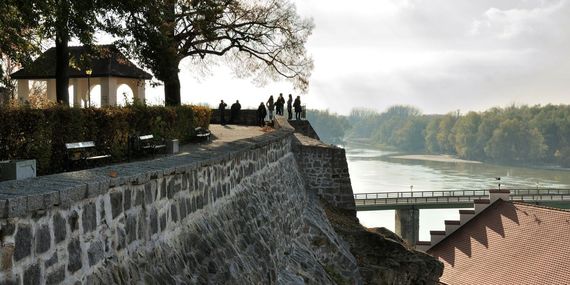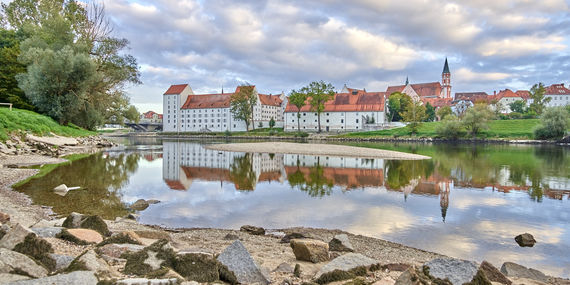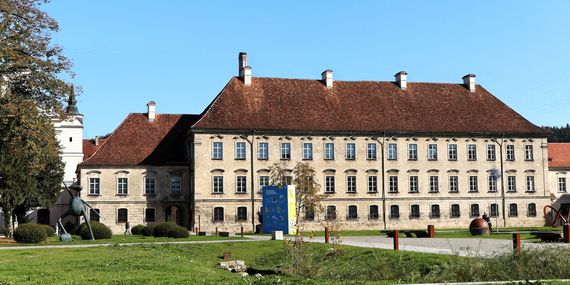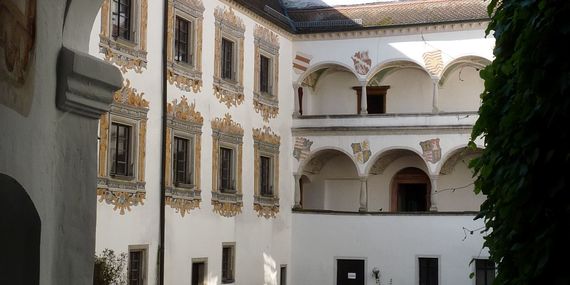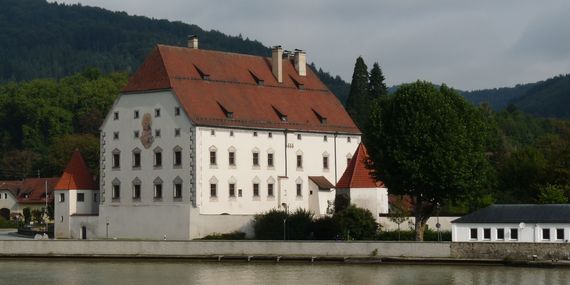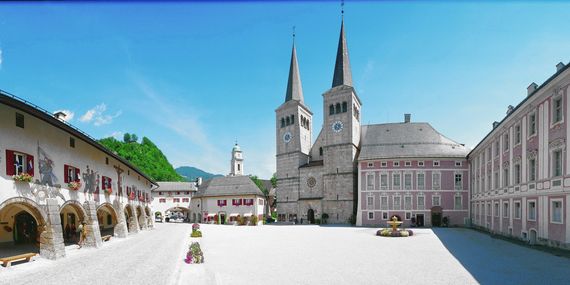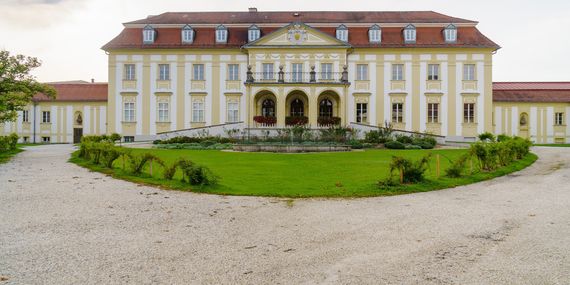Schale, um 1700 (Oberhausmuseum Passau).
Copyright: Oberhausmuseum Passau
From Castles to Palaces
Not every castle has been fortified - sometimes, on the contrary, it was prettified. This change, often parallel to the fortification of the larger castles, took place from the 15th until the 17th centuries. While fortresses such as Burghausen, Kufstein and Hohensalzburg were mainly constructed for feistiness, the palaces were turned into comfortable, homelike and magnificent buildings. This tendency remained influential beyond the Baroque period.
For the rulers of the early modern period it became increasingly important to present themselves in the “modern” style and to enjoy themselves in a duly representative manner. The Italian-inspired Renaissance style of new architecture had less defense but more playfulness. The either new or redesigned palaces of that time are showing this change impressively. They offered the possibility of idleness in so-called pleasure gardens, spacious gardens with inviting pavilions and garden-like fishponds. Artificial grottos decorated with shells were also very trendy.
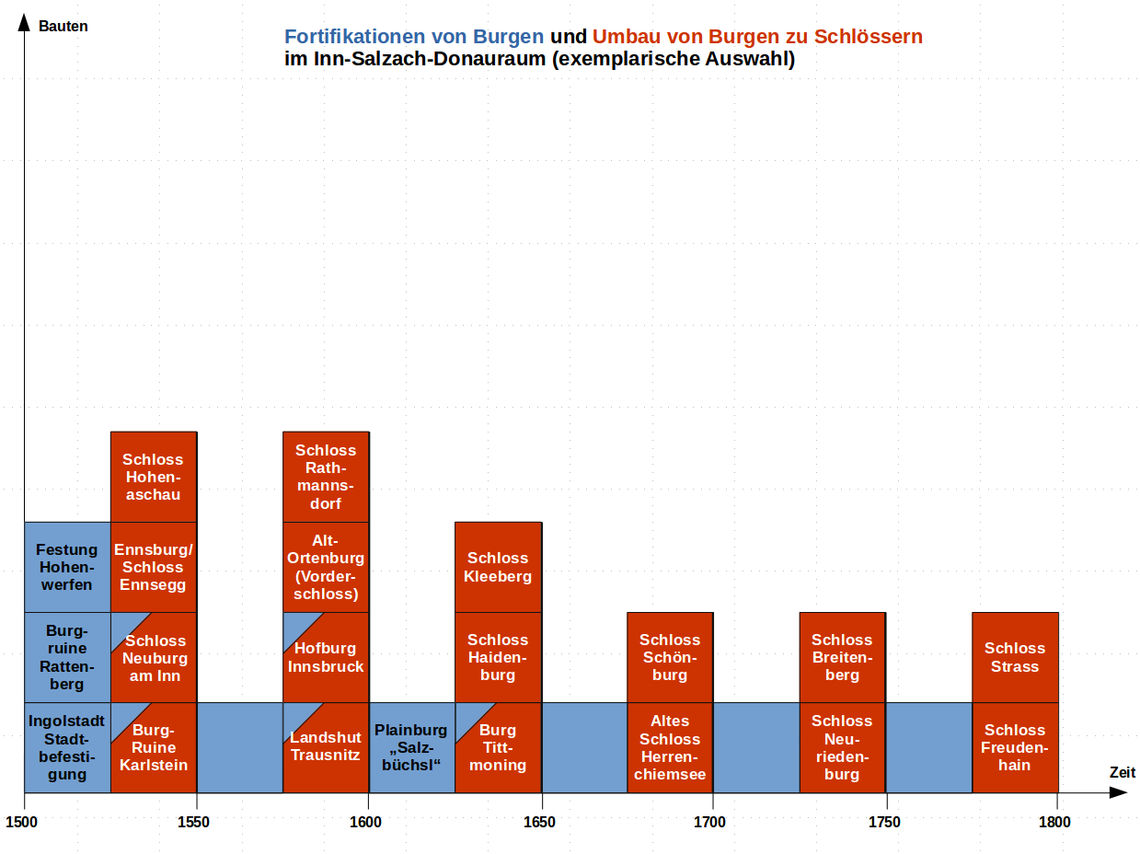
Particularly in the 15th and 16th centuries, the terms ‘castle’ and ‘palace’ cannot always be clearly defined. The tendency towards either fortresses (for the purpose of fortification, warfare and border security) or places (in the sense of representation, for residential purposes or summer stays) is, however, recognizable in the entire Inn-Salzach-Danube region.
Subtypes of palaces are, for example, categorized according to location, style or use of the palace complex: water palace, Renaissance palace, Baroque palace, city residence, hunting palace, pleasure palace.
